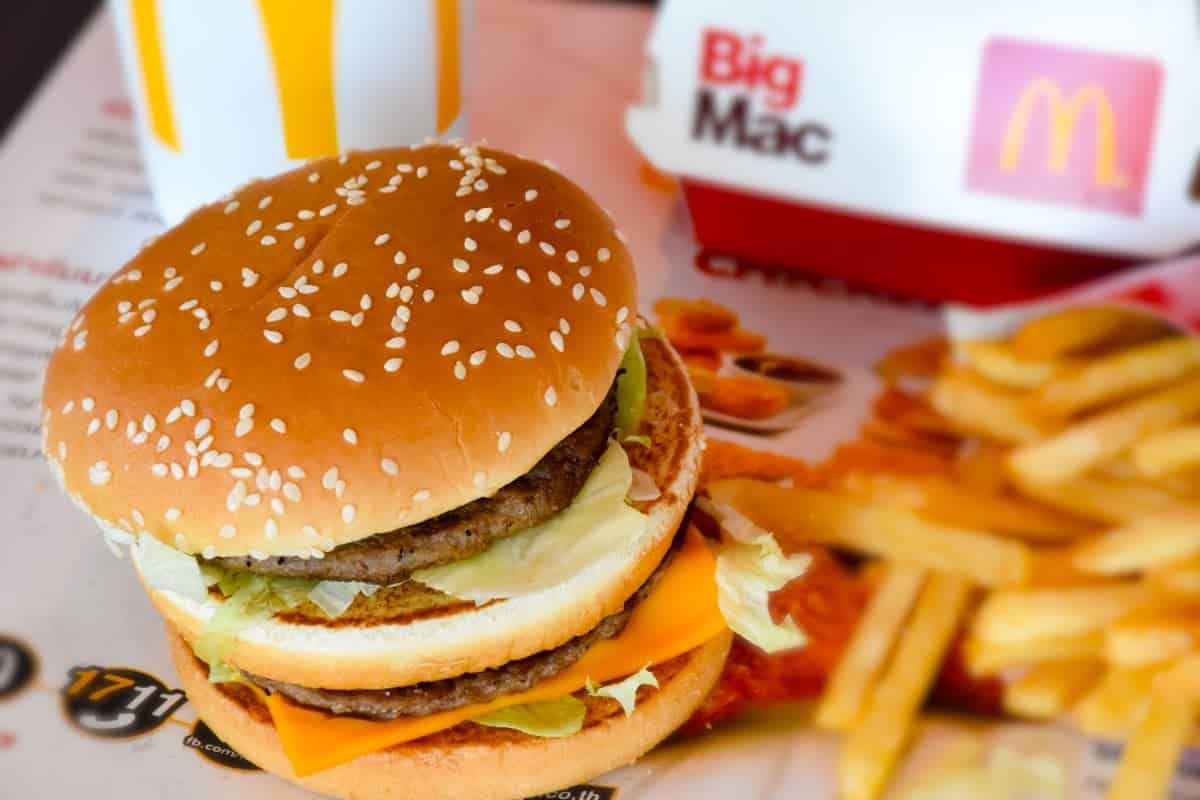Ever wonder why your Big Mac tastes a little different here in the U.S. compared to what you’ve had abroad? It’s not just the ambiance or the company—there’s something else going on. The truth is, McDonald’s in America isn’t quite what it seems. Sure, the menu looks the same, but what about the ingredients? That’s where things get interesting.
Not All Ingredients Are Created Equal

You might assume that a Big Mac is a Big Mac, no matter where you are in the world. But here’s the kicker: the ingredients McDonald’s uses in America aren’t always the same as those in other countries. In fact, some of the ingredients that end up in your burger, fries, or nuggets in the U.S. wouldn’t make the cut overseas.
Preservatives and Additives Galore

Let’s start with the basics. Did you know that the McDonald’s buns in the U.S. contain a chemical called azodicarbonamide? It’s used to bleach flour and make the dough rise faster. But here’s the catch: this same chemical is banned in Europe and Australia because of potential health concerns. Yet, in the U.S., it’s business as usual.
What’s in That Nugget?

Chicken McNuggets are a fan favorite, but do you really know what’s inside? In the U.S., those crispy little bites contain a long list of ingredients, including TBHQ (tertiary butylhydroquinone), a preservative that helps extend shelf life. The thing is, TBHQ has been linked to various health issues, and while it’s allowed in small amounts, it’s still a point of controversy. Over in the U.K., McDonald’s nuggets are made with fewer preservatives and more straightforward ingredients.
The High-Fructose Corn Syrup Factor

Love that sweet tangy taste in your ketchup or sweet and sour sauce? You can thank high-fructose corn syrup (HFCS) for that. In the U.S., HFCS is a go-to sweetener, found in everything from buns to sauces. But this isn’t the case in other parts of the world, where regular sugar or natural sweeteners are preferred. HFCS has been under fire for its links to obesity and diabetes, yet it’s still a staple in American McDonald’s.
Flavor Boosters: Real or Artificial?

When you bite into a McDonald’s burger, you’re likely tasting more than just beef. In the U.S., artificial flavors are often used to enhance that signature taste. Take the French fries, for example. In America, they’re flavored with “natural beef flavor,” which is made from hydrolyzed wheat and milk. In other countries like the U.K., the fries are just potatoes, oil, and a pinch of salt—no flavor enhancers needed.
The Portion Size Illusion

Ever noticed that American portions tend to be larger? It’s not just your imagination. McDonald’s in the U.S. often serves up bigger portions compared to its international counterparts. That large soda or super-sized fries might seem like a good deal, but it also means more calories, sugar, and unhealthy fats per meal.
The Health Impact

So, what does all this mean for you? Well, these ingredient differences add up. American McDonald’s meals tend to be higher in calories, sugar, and unhealthy additives compared to those served in other countries. This could be one reason why the U.S. struggles with higher rates of obesity and diet-related health issues. The ingredients you’re consuming here aren’t just different—they’re often less healthy.
Why the Difference?

You might be wondering why there is a difference. A lot of it comes down to regulations. Food laws in the U.S. are generally more lenient when it comes to additives, preservatives, and artificial ingredients. On top of that, the American market often prioritizes cost and convenience over ingredient quality. The result? A menu that’s familiar but fundamentally different from what you’d get at McDonald’s overseas.
The Push for Change

The good news is that there’s a growing movement in the U.S. for better food standards. Consumers are becoming more health-conscious and demanding cleaner, more transparent ingredients. McDonald’s has responded with some changes, like removing artificial preservatives from certain items. But these changes are slow, and many menu items still don’t match the quality found in other countries.
Not All McDonald’s Are Created Equal

The next time you’re craving a Big Mac or some McNuggets, remember: not all McDonald’s are created equal. What you’re eating in America might not be quite the same as what you’d get overseas.
A Push for Better Options

The ingredients that make up your meal are a reflection of broader food industry practices, and they’re not always what they seem. As consumers push for better options, there’s hope that one day, McDonald’s in America will offer the same quality as its global counterparts—but we’re not there yet.
20 Foods You Should Never Put on Your Plate

Listen up—these foods might seem harmless, but they’re secretly sabotaging your health. They look innocent in your kitchen, but trust me, they’re trouble. Here’s a quick rundown of 20 foods that aren’t as friendly as they seem. Consider this your heads-up! 20 Foods You Should Never Put on Your Plate
Taco Bell’s Biggest Value Meal Ever Hits the Market

America’s most popular Mexican-American fast food chain has joined the so-called “fast food wars,” offering new meal deals to bring customers through their doors. Taco Bell’s Biggest Value Meal Ever Hits the Market
Cut These 20 Ultra-Processed Foods from Your Diet

American supermarket shelves may dazzle with convenience and flavor, but beneath the flashy packaging lurks a world of ultra-processed foods. Can you decipher labels to make healthier choices for your well-being? Cut These 20 Ultra-Processed Foods from Your Diet
Featured Image Credit: Shutterstock / Patcharaporn Puttipon4289.
The content of this article is for informational purposes only and does not constitute or replace professional advice.
The images used are for illustrative purposes only and may not represent the actual people or places mentioned in the article.
For transparency, this content was partly developed with AI assistance and carefully curated by an experienced editor to be informative and ensure accuracy.

